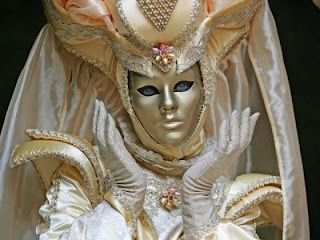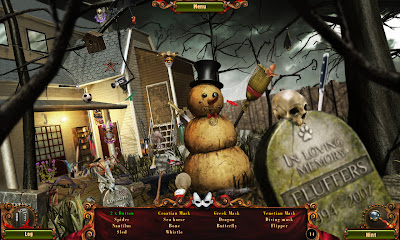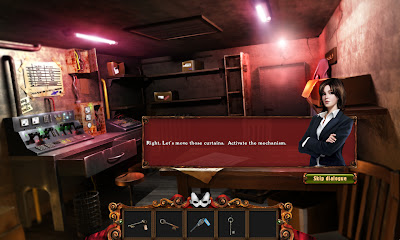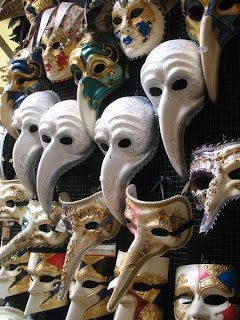PLAY Enjoy!!
HIDDEN OBJECT GAMES
PC | ENG | 233 Mb | UNRAR & PLAY
OS: Windows XP/Windows Vista/Windows 7 | CPU: 1.0 GHz | RAM: 1024 MB | DirectX: 9.0 | Hard Drive: 255 MB
Thank: BigFishGames
Solve a murder mystery in Eastville Chronicles: The Drama Queen Murder! The Eastville Opera House is the hub of high society and tonight, the curtains will draw for the last time on Dolores Molinero, the Queen of Drama. As the new crime investigator it’s your job to unravel this tale of love, passion and intrigue to unmask the murderer. Interrogate suspects, search for clues and find the culprit in this immersive hidden object puzzle adventure game!
Game includes:
ไขปริศนาคดีฆาตกรรมใน Eastville Chronicles: The Drama Queen Murder! โอเปร่าเฮ้าส์ Eastville เป็นศูนย์รวมของบุคคลในสังคมชั้นสูง และคืนนี้ ม่านได้ถูกเปิดเพื่อแสดงให้เห็นถึงวาระสุดท้ายของ Dolores Molinero ราชินีแห่งโรงละคร ในการสืบสวนของคุณกับคดีฆาตกรรมบทใหม่นี้จะถูกคลี่คลายและบอกเล่าในเรื่องราวของความรัก กิเลสตัณหา และเล่ห์กลวางอุบายเพื่อเปิดโปงฆาตกร คุณจะต้องสอบปากคำผู้ต้องสงสัย ค้นหาเบาะแสและหาผู้กระทำผิดในปริศนาที่ถูกซ่อนอยู่ในเกมผจญภัยเกมนี้!
- Incredible graphics
- Interrogate five key suspects
- Discover just who the Scaramouch was
ประกอบด้วย:
Turbobit
Eastville Chronicles - The Drama Queen Murder.rar
REVIEW : RELATED STORY
Magic of Venetian Carnival Mask
.jpg) Venetian masks can be made in leather or with the original glass technique. The original masks were rather simple in design, decoration, and often had a symbolic and practical function. Nowadays, most of them are made with the application of gessoand gold leaf and are all hand-painted using natural feathers and gems to decorate.
Venetian masks can be made in leather or with the original glass technique. The original masks were rather simple in design, decoration, and often had a symbolic and practical function. Nowadays, most of them are made with the application of gessoand gold leaf and are all hand-painted using natural feathers and gems to decorate.
เทศกาลสวมหน้ากาก : เวนิส คาร์นิวัล
เมื่อพูดถึงเทศกาลสวมหน้ากากอันโด่งดังของอิตาลี เห็นจะหนีไม่พ้นงาน “เวนิส คาร์นิวัล” นั่นเอง งานเทศกาลในเมืองเวนิสนั้นมีมาตั้งแต่ปี 1268 แล้ว แต่การเฉลิมฉลองโดยมีการสวมหน้ากาก รวมถึงแต่งองค์ทรงเครื่องกันอย่างอลังการเพิ่งจะมีขึ้นในเกือบสองร้อยปีให้หลัง เมื่อช่างทำหน้ากากหรือ “mascareri” ได้รวมตัวกันก่อตั้งสมาคมขึ้นอย่างเป็นทางการในปี 1436
สมัยก่อนนั้นชาวเวนิสเขาสวมหน้ากากกันจนเรียกได้ว่าเป็นส่วนหนึ่งของชีวิตเลยทีเดียว ยิ่งในช่วงศตวรรษที่ 18 ถือเป็นยุคที่รุ่งเรืองมากของการสวมหน้ากาก ผู้คนในสาธารณรัฐเวนิสสวมหน้ากากออกจากบ้านถึงปีละ 8 เดือนด้วยซ้ำ ไม่ต้องสงสัยว่าเมืองจะเต็มไปด้วยเสน่ห์ลึกล้ำเพียงใด เมื่อผู้คนไม่ว่ายากดีมีจนซ่อนหน้าตาสถานะของตนไว้ภายใต้หน้ากาก และใช้ชีวิตสุดเหวี่ยงแบบไม่ต้องแคร์ใคร และบางครั้งก็เพื่อมีเซ็กซ์กันโดยไม่ต้องกลัวว่าใครจะจำได้
 แต่หลังจากการยึดครองของกองทัพของนโปเลียนในปี 1797 เมื่อเวนิสกลายเป็นส่วนหนึ่งของอาณาจักรลอมบาร์ดี-เวเนเทีย ทุกอย่างก็เปลี่ยนไป
แต่หลังจากการยึดครองของกองทัพของนโปเลียนในปี 1797 เมื่อเวนิสกลายเป็นส่วนหนึ่งของอาณาจักรลอมบาร์ดี-เวเนเทีย ทุกอย่างก็เปลี่ยนไป
การยึดครองนำมาซึ่งการสั่งห้ามการจัดงานเฉลิมฉลองงานรื่นเริงเป็นเวลาหลายปี ผู้คนไม่ได้รับอนุญาตให้ใช้หน้ากากเปเปอร์มาเช่เพื่อปกปิดหน้าตา และงานเต้นรำสวมหน้ากากก็ถูกห้าม จนกระทั่งทศวรรษที่ 1970 ประเพณีดั้งเดิมดังกล่าวถูกฟื้นขึ้นมาใหม่ เมื่อกลุ่มของอดีตนักศึกษาอคาเดมี ออฟ ไฟน์ อาร์ต ได้เปิดร้านขายหน้ากากสมัยใหม่แห่งแรกของกรุงเวนิสขึ้นในปี 1978
หน้ากากที่สวมในคาร์นิวัลของเวนิสแบ่งออกเป็นหลายประเภท ได้แก่
ปัจจุบันหน้ากากสวยๆ และหมวกแปลกๆ สำหรับงานเทศกาลเป็นของฝากที่ขึ้นชื่อที่สุดจากเวนิส โดยเฉพาะหน้ากากแบบสุดท้ายที่เรากล่าวถึง
Source:- ภาพกราฟิกที่สวยงาม
- การสอบปากคำห้าผู้ต้องสงสัยที่สำคัญ
- การค้นหาว่าใครคือฆาตกร
Download from:
FileFactory
Download Eastville Chronicles - The Drama Queen Murder.rar from FileFactory.com
------------------------------------------------------------------------------------------------------------
DepositFiles
http://depositfiles.com/files/5rlytpx9z
------------------------------------------------------------------------------------------------------------FileFactory
Download Eastville Chronicles - The Drama Queen Murder.rar from FileFactory.com
------------------------------------------------------------------------------------------------------------
DepositFiles
http://depositfiles.com/files/5rlytpx9z
Turbobit
Eastville Chronicles - The Drama Queen Murder.rar
REVIEW : RELATED STORY
Magic of Venetian Carnival Mask
Masks have always been a main feature of the Venetian carnival.Traditionally people were allowed to wear them between the festival of Santo Stefano (St. Stephen’s Day, December 26) and the start of the carnival season and midnight of Shrove Tuesday. They have always been around Venice. As masks were also allowed on Ascension and from October 5 to Christmas, people could spend a large proportion of the year in disguise. Maskmakers (mascherari) enjoyed a special position in society, with their own laws and their own guild.
.jpg) Venetian masks can be made in leather or with the original glass technique. The original masks were rather simple in design, decoration, and often had a symbolic and practical function. Nowadays, most of them are made with the application of gessoand gold leaf and are all hand-painted using natural feathers and gems to decorate.
Venetian masks can be made in leather or with the original glass technique. The original masks were rather simple in design, decoration, and often had a symbolic and practical function. Nowadays, most of them are made with the application of gessoand gold leaf and are all hand-painted using natural feathers and gems to decorate.- History
There is very little evidence explaining the motive for the earliest mask wearing in Venice. One scholar argues that covering the face in public was a uniquely Venetian response to one of the most rigid class hierarchies in European history.
The first documented sources mentioning the use of masks in Venice can be found as far back as the 13th century. The Great Council made it a crime to throw scented eggs. The document decrees that masked persons were forbidden to gamble.
Another law in 1339 forbade Venetians from wearing vulgar disguises and visiting nun's convents while masked. The law also prohibits painting one's face, or wearing false beards or wigs.
Near the end of the Republic, the wearing of masks in daily life was severely restricted. By the 18th century, it was limited only to about three months from December 26. The masks were traditionally worn with decorative beads matching in color.
- Types of masks
 |
| Bauta |
Bauta :Bauta (sometimes referred as baùtta) is a mask which covers the whole face; this was a traditional piece of art, with a stubborn chin line, no mouth and lots of gilding. The mask has a square jaw line often pointed and tilted upwards to enable the wearer to talk, eat and drink easily without having to remove the mask, thereby preserving their anonymity. The Bauta was often accompanied by a red cape and a tricorn. In 18th century, together with a black cape called "Tabarro", the Bauta had become a standardized society mask and disguise regulated by the Venetian government. It was obligatory to wear it at certain political decision-making events when all citizens were required to act anonymously as peers. Only citizens had the right to use the Bauta. Its role was similar to the anonymizing processes invented to guarantee general, direct, free, equal and secret ballots in modern democracies. It was not allowed to wear weapons along with the mask, and police had the right to enforce this ruling.
Columbina : The Columbina (also known as Columbine and Columbino) is a half-mask, often highly decorated with gold, silver, crystals and feathers. It is held up to the face by a baton or tied with ribbon as with most other Venetian masks. The columbine was popularised by an early actress in the Commedia dell’arte of the same name. It is said it was designed for her because she did not wish to have her beautiful face covered completely.
Columbina
Medico della Peste (The Plague Doctor) : The Medico della Peste, with its long beak, is one of the most bizarre and recognisable of the Venetian masks. The striking design has a macabre history, originating from 17th-century French physician Charles de Lorme, who adopted the mask together with other sanitary precautions while treating plague victims. The mask is white, consisting of a hollow beak and round eyeholes covered with crystal discs, creating a bespectacled effect. Today, the masks are often more decorative. The doctors who followed De Lorme's example wore the usual black hat and long black cloak as well as the mask, white gloves and a stick (to move patients without having to come into physical contact). They hoped these precautions would prevent them contracting the disease. Those who wear the plague doctor mask often also wear the associated clothing of the plague doctor. The popularity of the Medico della Peste among Carnival celebrants can be seen as a memento mori.
Medico della Peste
Moretta or Servetta Muta
Moretta : The Moretta (or Servetta Muta) was a strapless oval mask with wide eyeholes, worn by patrician women. The mask was held in place by the wearer biting on a button or bit and was finished off with a veil. Servetta Muta translates as "mute maid servant". This mask has not been widely worn since 1760.
Volto (Larva)
Volto (Larva) : The larva, also called the volto mask, is mainly white and typically Venetian. It is worn with a tricorn and cloak. It is thought the word "larva" comes from the Latin, meaning "mask" or "ghost". Like the bauta, the shape of the mask allowed the wearer to breathe, drink and speak easily without having to remove the mask. These masks were made of fine wax cloth, and so were light and comfortable to wear, making them ideal for a night of socializing and dancing.
เทศกาลสวมหน้ากาก : เวนิส คาร์นิวัล
เมื่อพูดถึงเทศกาลสวมหน้ากากอันโด่งดังของอิตาลี เห็นจะหนีไม่พ้นงาน “เวนิส คาร์นิวัล” นั่นเอง งานเทศกาลในเมืองเวนิสนั้นมีมาตั้งแต่ปี 1268 แล้ว แต่การเฉลิมฉลองโดยมีการสวมหน้ากาก รวมถึงแต่งองค์ทรงเครื่องกันอย่างอลังการเพิ่งจะมีขึ้นในเกือบสองร้อยปีให้หลัง เมื่อช่างทำหน้ากากหรือ “mascareri” ได้รวมตัวกันก่อตั้งสมาคมขึ้นอย่างเป็นทางการในปี 1436
สมัยก่อนนั้นชาวเวนิสเขาสวมหน้ากากกันจนเรียกได้ว่าเป็นส่วนหนึ่งของชีวิตเลยทีเดียว ยิ่งในช่วงศตวรรษที่ 18 ถือเป็นยุคที่รุ่งเรืองมากของการสวมหน้ากาก ผู้คนในสาธารณรัฐเวนิสสวมหน้ากากออกจากบ้านถึงปีละ 8 เดือนด้วยซ้ำ ไม่ต้องสงสัยว่าเมืองจะเต็มไปด้วยเสน่ห์ลึกล้ำเพียงใด เมื่อผู้คนไม่ว่ายากดีมีจนซ่อนหน้าตาสถานะของตนไว้ภายใต้หน้ากาก และใช้ชีวิตสุดเหวี่ยงแบบไม่ต้องแคร์ใคร และบางครั้งก็เพื่อมีเซ็กซ์กันโดยไม่ต้องกลัวว่าใครจะจำได้
 แต่หลังจากการยึดครองของกองทัพของนโปเลียนในปี 1797 เมื่อเวนิสกลายเป็นส่วนหนึ่งของอาณาจักรลอมบาร์ดี-เวเนเทีย ทุกอย่างก็เปลี่ยนไป
แต่หลังจากการยึดครองของกองทัพของนโปเลียนในปี 1797 เมื่อเวนิสกลายเป็นส่วนหนึ่งของอาณาจักรลอมบาร์ดี-เวเนเทีย ทุกอย่างก็เปลี่ยนไปการยึดครองนำมาซึ่งการสั่งห้ามการจัดงานเฉลิมฉลองงานรื่นเริงเป็นเวลาหลายปี ผู้คนไม่ได้รับอนุญาตให้ใช้หน้ากากเปเปอร์มาเช่เพื่อปกปิดหน้าตา และงานเต้นรำสวมหน้ากากก็ถูกห้าม จนกระทั่งทศวรรษที่ 1970 ประเพณีดั้งเดิมดังกล่าวถูกฟื้นขึ้นมาใหม่ เมื่อกลุ่มของอดีตนักศึกษาอคาเดมี ออฟ ไฟน์ อาร์ต ได้เปิดร้านขายหน้ากากสมัยใหม่แห่งแรกของกรุงเวนิสขึ้นในปี 1978
หน้ากากที่สวมในคาร์นิวัลของเวนิสแบ่งออกเป็นหลายประเภท ได้แก่
- หน้ากากแบบ Commedia dell'Arte ซึ่งเป็นละครตลกในยุคศตวรรษที่ 16-18 ของอิตาลี จะเป็นหน้ากากที่ทำขึ้นตามตัวละครเช่น ตัวตลกอย่าง ฮาร์เลควิน กับ ปิเอโรต์
- หน้ากากแฟนตาซี ประดิษฐ์ขึ้นตามจินตนาการของช่างทำหน้ากาก ซึ่งส่วนใหญ่จะได้รับแรงบันดาลใจมาจากการศิลปะการออกแบบในประวัติศาสตร์
- หน้ากากแบบดั้งเดิมของชาวเวนิส เช่น หน้ากากขาวปลายแหลมคล้ายปากนก ซึ่งเป็นหน้ากากที่พวกหมอเคยใช้ในสมัยที่กาฬโรคระบาดครั้งใหญ่ช่วงศตวรรษที่ 14 และจะใส่สมุนไพรเอาไว้ที่ปลายแหลม เพื่อฆ่าเชื้อในอากาศที่สูดเข้าไป
ปัจจุบันหน้ากากสวยๆ และหมวกแปลกๆ สำหรับงานเทศกาลเป็นของฝากที่ขึ้นชื่อที่สุดจากเวนิส โดยเฉพาะหน้ากากแบบสุดท้ายที่เรากล่าวถึง
http://en.wikipedia.org/wiki/Carnival_of_Venice#Venetian_carnival_masks
http://www.manager.co.th/Around/ViewNews.aspx?NewsID=9480000101036
http://www.manager.co.th/Around/ViewNews.aspx?NewsID=9480000101036











No comments:
Post a Comment